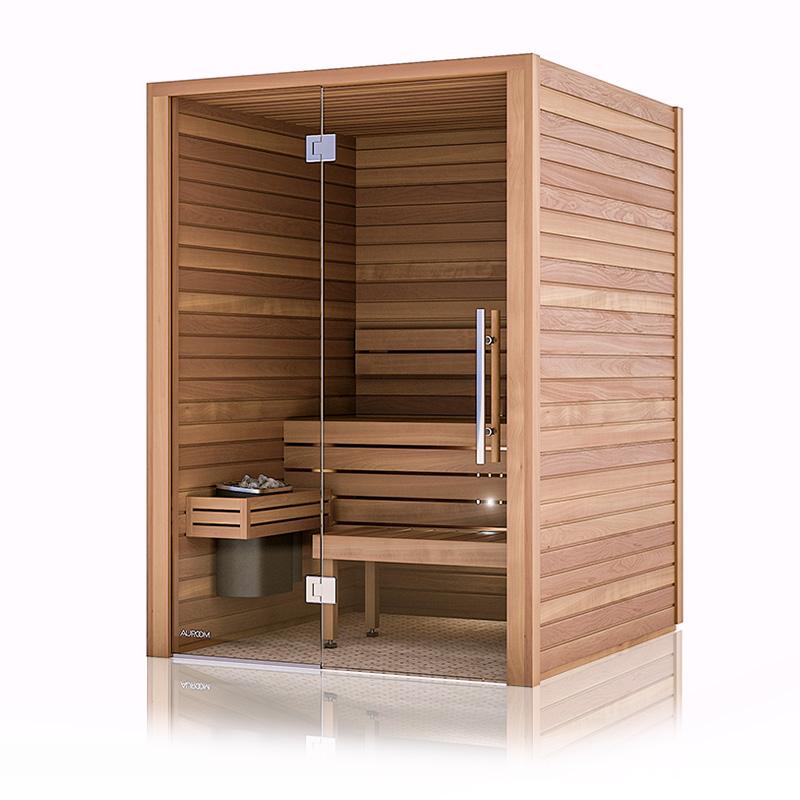The 7-Minute Rule for Traditional Sauna
Wiki Article
Our Traditional Sauna Statements
Table of ContentsThe 10-Minute Rule for Traditional SaunaIndicators on Traditional Sauna You Need To KnowThe 8-Minute Rule for Traditional SaunaHow Traditional Sauna can Save You Time, Stress, and Money.Getting My Traditional Sauna To Work
The majority of the weight shed in a sauna is water loss and is re-gained upon rehydrating. However, undoubtedly sauna can be a vital part of a healthy and balanced weight management program. To check out the distinctions in between typical and IR saunas, I will certainly separate these right into proven, theoretical, and produced differences.Thus, the most popular factor in the saunawhich is at the ceiling directly above the sauna heateris normally in between 185 and 190 F. Claims that a typical sauna goes beyond 200 F is merely not true and not appropriate for electric saunas sold in the US. The temperature level for a far-infrared sauna is usually set between 120 and 140 F; however, unlike the typical sauna, the objective in and IR area is not to accomplish a high temperature.
As a result of this, the temperature distinction is virtually unnecessary, given that profuse sweating leads to both sauna kinds, however the method of heating the body is different. In an IR sauna the bather will certainly really feel hot and will sweat a lot, however at much reduced temperature levels. Traditional Sauna. Therefore, if the objective is to invest longer time periods in the sauna, the IR sauna is a good selection

Not known Incorrect Statements About Traditional Sauna

When the high temperature is accomplished, the elements cycle on and off to preserve the high temperature. Traditional Sauna. A lot of typical sauna individuals take pleasure in putting water over the rocks to develop vapor to elevate sauna moisture levels. The benefits of pouring water over the rocks include: making the space a lot more comfy, dampening the nasal flows, and permitting the usage of aromatherapy by blending necessary oils with the water
In a far-infrared sauna, the heat waves penetrate the body to efficiently heat the body and raise the body core temperature. To accomplish this boosted temperature level, Far-infrared emitters develop infrared power which is close to the exact same wavelength as that which the body normally emitsoften described as the "Crucial Variety" of 7 to 14 microns), so the energy is well gotten by the body.
go right here
When the power goes into the body, it triggers the body temperature to boost and eventually leads to sweating. In an infrared sauna it is very important for the emitters/heaters to continue to be on virtually continuously. Because there is no mass of rocks to maintain warmth, the sauna will cool if the emitters shut down.
The 7-Minute Rule for Traditional Sauna
As discussed over, the sauna bather in an infrared space wants to position himself before operating emitters to obtain maximum gain from the heat. The heating time for the 2 spaces can be very various, depending on how the areas are utilized. For a conventional sauna, a bather needs to enable 30-40 minutes for the area to achieve a wanted temperature and to effectively pre-heat the rocks.A well created sauna will usually achieve a temperature of 150-160 F in concerning 30-40 minutes. For hotter temperatures, the space may require to heat for a longer duration.

Traditional saunas tend to be bigger (therefore use more electrical energy) than infrared saunas, although standard saunas are definitely available in one and two person dimensions. For a two-person typical sauna, 5x6 or 5x7 dimension is most popular. The leading bench can pleasantly seat 2 or three people and is additionally enough time to rest during the sauna session.
The smart Trick of Traditional Sauna That Nobody is Talking About
The average price per kWH of electrical power in the united state is around $0.11 - Traditional Sauna, so a 4.5 kW heating unit will cost approximately $.50 to run for one hour, if the heating system runs continually for one hour. Commonly a sauna heating unit will certainly run for 75% of the initial hour and 50% of subsequent hours on given that the aspects cycle once the set temperature is attainedA two person far-infrared room is normally literally smaller than a typical sauna, frequently about 4' x 4' or smaller sized. The IR heater is normally 1.5-1.7 kW using a 120 volt 15 amp plug-in service. Considering that the area next page can be utilized earlier than a sauna room, we will presume the area is made use of for to of an hour consisting of warm up time.
There is a seldom talked about distinction in the social experience in between the two rooms. While our culture has shed several of the social benefit of the conventional sauna experience, it can be extremely socially rewarding. From household time in the sauna, to heart-felt discussions with significant others, to sauna partiesthe conventional sauna experience can result in intimate socializing.
The smart Trick of Traditional Sauna That Nobody is Discussing
Many greater end infrared spaces include tinted light therapy, sound systems and full-glass fronts.Report this wiki page